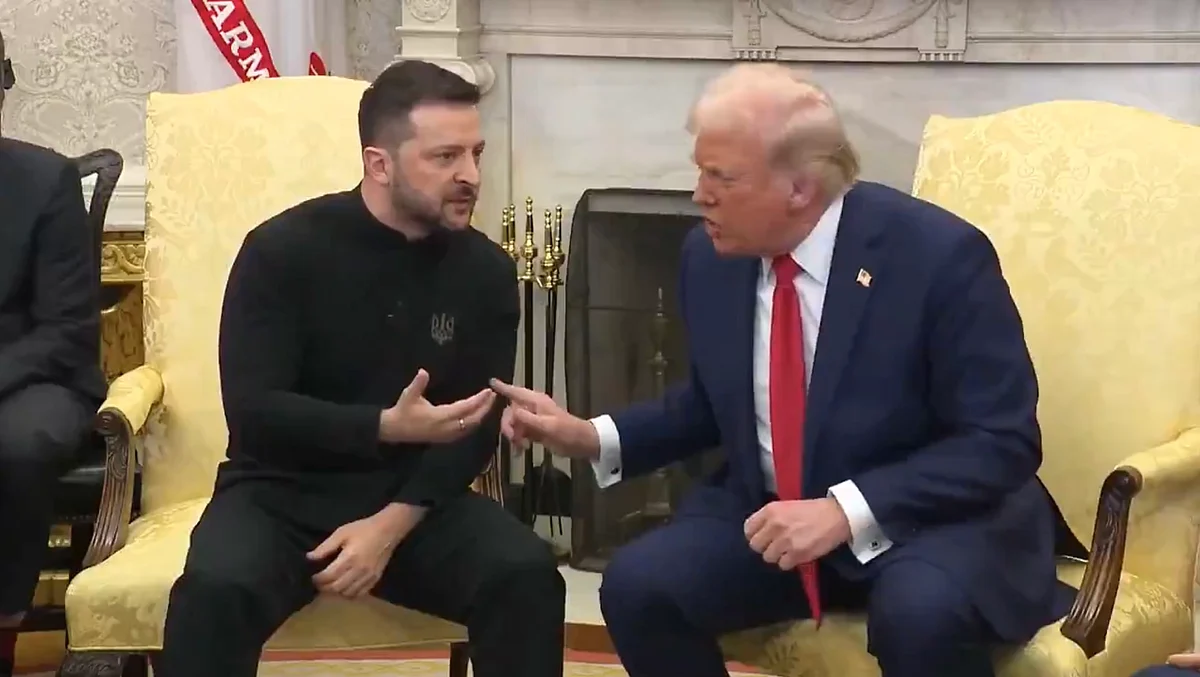
History Made, Not in a Good Way: Trump, Zelensky Meeting Devolves into Ugly Spat
From a Ukrainian perspective, this is more of a strength than a weakness.

advertisement
The visit of Ukrainian president Volodymyr Zelensky to the White House has not gone to plan – at least not to his plan. There were extraordinary scenes as a press conference between Zelensky and Donald Trump descended into acrimony, with the US president loudly berating his opposite number, who he accused of “gambling with World War Three”.
Reporters present described the atmosphere as heated with voices raised by both Trump and Vance. The New York Times said the scene was “one of the most dramatic moments ever to play out in public in the Oval Office and underscored the radical break between the United States and Ukraine since Mr Trump took office”.
From Minerals to Meltdown
Underlying the angry exchanges were differences between the Trump administration and the Ukrainian government over the so-called “minerals deal” that Zelensky was scheduled to sign. But any lack of Ukrainian enthusiasm for the deal is understandable.
The deal on offer is the creation of what will be called a “reconstruction investment fund”, to be jointly owned and managed by the US and Ukraine.
Into the proposed fund will go 50 percent of the revenue from the exploitation of “all relevant Ukrainian government-owned natural resource assets (whether owned directly or indirectly by the Ukrainian government)” and “other infrastructure relevant to natural resource assets (such as liquified natural gas terminals and port infrastructure)”.
This means that private infrastructure – much of it owned by Ukraine’s wealthy oligarchs – is likely to become part of the deal. This has the potential of further increasing friction between Zelensky and some very powerful Ukrainians.
Meanwhile, US contributions are less clearly defined. The preamble to the agreement makes it clear that Ukraine already owes the US. The very first paragraph notes that “the United States of America has provided significant financial and material support to Ukraine since Russia’s full-scale invasion of Ukraine in February 2022”.
This figure, according to Trump, amounts to $350 billion (£278 billion). The actual amount, according to the Ukraine Support Tracker of the Kiel Institute for the World Economy, is about half that.
Since the current draft leaves details on ownership, governance and operations to be determined in a future fund agreement, Trump’s very big deal is at best the first step. Future rounds of negotiations are to be expected.
Oval Office Showdown Reverberates Beyond Washington
From a Ukrainian perspective, this is more of a strength than a weakness. It leaves Kyiv with an opportunity to achieve more satisfactory terms in future rounds of negotiation.
Take the example of security guarantees. The draft agreement offers Ukraine nothing anywhere near Nato membership. But it notes that the US “supports Ukraine’s efforts to obtain security guarantees needed to establish lasting peace”, adding that: “Participants will seek to identify any necessary steps to protect mutual investments.”
The significance of this should not be overstated. At its bare minimum, it is an expression of intent by the US that falls short of security guarantees but still gives the US a stake in the survival of Ukraine as an independent state.
Trump does not envisage that the US will give Ukraine security guarantees “beyond very much”. He seems to think that these guarantees can be provided by European troops (the Kremlin has already cast doubts on this idea).
But this does not mean the idea is completely off the table. On the contrary, because the US commitment is so vague, it gives Trump leverage in every direction.
And he can signal to the Russian president, Vladimir Putin, that the US is serious about making a deal stick – and that higher American economic stakes in Ukraine and corporate presence on the ground would mean US-backed consequences if the Kremlin reneges on a future peace agreement and restarts hostilities.
That these calculations will ultimately lead to the “free, sovereign and secure Ukraine” that the agreement envisages is not a given.
For now, however, despite all the shortcomings and vagueness of the deal on key issues – and the very public argument between the parties – it still looks like it serves all sides’ interests in moving forward in this direction.
(Stefan Wolff is Professor of International Security, University of Birmingham. Tetyana Malyarenko is Professor of International Relations, Jean Monnet Professor of European Security, National University Odesa Law Academy. This article is republished from The Conversation under a Creative Commons License. Read the original article.)
- Access to all paywalled content on site
- Ad-free experience across The Quint
- Early previews of our Special Projects
Published: undefined